IPA – America’s Favorite Craft Beer
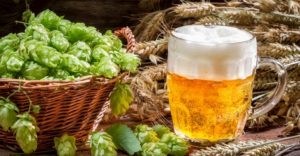
Once again in 2018, as in many prior years, America’s favorite craft beer style was IPA – India Pale Ale. No doubt IPA will again be America’s favorite in 2019 and probably for many years to come. IPAs accounts for 22 percent of craft beer sales in America and the style is becoming a major force worldwide. Folks just can’t get enough of these hoppy brews.
Thanks to brewers’ ingenuity, there are now a significant number of IPA sub-styles to choose from, with more variations coming out every year. But exactly what defines the IPA style? Where did these beers come from and how did they evolve to become such a major force in the craft beer industry? Few beer styles have a more interesting history or so many misperceptions about their origins.
So let’s take a dive into the IPA-verse and clear up some of these questions.
The Colorful History of IPA
There are a lot of tales surrounding the origin of IPAs and most of them qualify as myths. I got tired of hearing so many conflicting stories and decided to do some research. It was a revelation. So here is the real story.
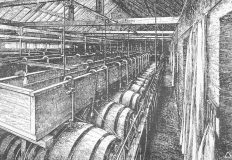
In the 18th and 19th centuries the British Empire’s reach was something to behold. One of its most significant outposts was the Indian Subcontinent. Emigrants, sailors and troops all had a thirst for British beer but the climate in India was too hot for brewing. So, in the second half of the 18th century, British brewers exported their beers – especially pale ales – to India on the same ships that had transported Indian goods to England. The long journey by sea, however, was tough on the English beers. Rough seas and hot weather in the Indian Ocean spoiled the beers before they arrived at their destination and brewers needed to come up with a solution.
In the early 1800s London’s Bow Brewery – owned by George Hodgson – dominated the trade of pale ale to India. Their October Beer was a strong ale brewed with 100% pale malt (relatively new at the time) and extra hops. The strength and hoppiness of the beer helped it survive the long voyage to India.
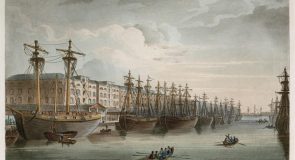
Hodgson was located near the docks where the East India Company’s ships were loaded. In those days, the captains and crews of these ships were allowed to trade on their own behalf. Hodgson appealed to these independent traders by offering them extended (18-month) credit so that they did not have to pay for the beer until they returned to England. This worked well until 1821, when Hodgson’s sons started to require payment up-front. This resulted in the East India Company looking to source beers elsewhere.

Samuel Allsopp, a brewer from Burton-on-Trent, was convinced by an East India Company official to brew the new style of hoppy pale ale. He did and it was a success. The first shipments of Allsopp’s beer set sail in 1823 and were a big hit with British expats, who preferred it to Hodgson’s product. This effectively shifted much production of the “India” beers to Burton.
In addition to Allsopp, Burton brewers Bass and Salt started brewing IPA and the three breweries soon dominated pale ale trading to India. The term India Pale Ale was first used in a newspaper article in 1829 and came into popular usage soon after. The Burton IPAs soon became more popular than the London versions – largely because of the very high mineral content of the River Trent’s water, which accentuated hop character and produced a brighter, more-refreshing beer.
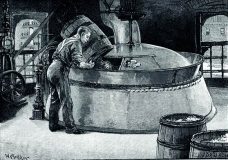
So what were the defining characteristics of these IPAs? Well for starters, they were not all that strong based on the standards of the day. They were, on average, about 6.8% ABV, which was less than Milds and Porters. IPAs sold domestically were even lower in alcohol.
The IPAs were very light in color – brewed with only high-quality pale ale malt. They were also quite hoppy – from both kettle hopping and dry hopping with the finest Goldings and Farnhams hops. This was a good bit more hoppy than domestic pale ales at the time. Another important characteristic of IPAs was high attenuation (the degree to which the sugars in the beer are consumed by the yeast). While Mild ales were typically 65% attenuated, IPAs were closer to 85% attenuated. This was important because – with nearly all of the sugars fermented out – bacterial infections were greatly reduced which prevented the casks from bursting. High attenuation gave the beers a dry finish.
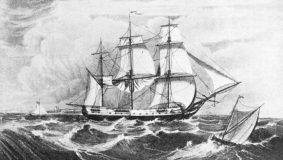
Finally, the three to four months at sea helped mature and condition the beer. High temperatures and the rocking motion of the ship accelerated the beer’s maturation. This was the equivalent of two years maturing on land. The result was a clear, dry and sparkling beer that was a hit with drinkers.
While the amount of beer exported to India was small compared to domestic sales of Milds and Porters, officers and officials returning from India drove demand for hoppy IPAs in the domestic market. From the 1840s on, they became the rage in England, driving higher domestic sales.
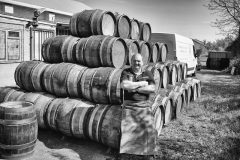
Without the maturing effect of the sea voyage, however, brewers needed to age the beers longer. Some brewers – like Bass – would stack casks in the courtyard and leave them exposed to the elements for as long as twelve months. Not only would this mature the beer, it also reduced spoilage due to temperature variations once the beer was bottled.
By the late 1800s in Britain, Europe and in the U.S., lagers were increasing in popularity which hurt IPA and Pale Ale sales. Shortages of ingredients during World War One resulted in weaker beers and consumers began to prefer the lighter versions. Many brands never went back to their pre-war strength and IPAs in general became known as lower-alcohol beers. This was not as true in Burton, so effectively two distinct styles of IPA were created. World War Two resulted in similar shortages of ingredients and reductions in strength, with many brewers using caramel malts to make up for the lack of gravity. As before, Burton beers, because of their premium prices, were not as affected as other brewers and maintained their higher alcohol. In the years since WWII, IPAs in Britain diminished in popularity and many became low-strength, lightly hopped shadows of their former selves. However, the recent growth of the British craft beer industry has resulted in more traditional IPAs being brought back.
IPAs in America
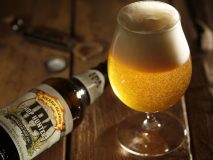
Prohibition – which lasted from 1920 to 1932 – pretty much wiped out ale brewing in the U.S. After Prohibition, consumers turned to lagers and the large brewers developed strong brands. This was the norm in America until the 1970s. With the birth of the craft beer movement, small brewers began reviving many forgotten ale styles using American ingredients, especially hops. These new beers started gaining traction with consumers, who were looking for something more than fizzy yellow lagers offered.
New Albion Brewing in Sonoma, California produced some of the first craft beers. In San Francisco, Anchor’s Liberty Ale was a big hit and became known as the first modern American IPA. As more and more craft breweries opened during the 1970s, 1980s and 1990s, IPAs grew to become the favorite craft style. After decades of bland lagers, Americans were ready to taste something. Creativity became the hallmark of American craft brewers who did not have to adhere to any particular style standards. Brewing in America reinvented itself. In 1979, there were only 89 breweries in the United States, mostly making the same thing. Now there are more than 7,000 – and their market share has been increasing steadily. IPAs are leading the pack and many new types and styles of IPA are joining the family.
Styles of IPAs
With IPAs being so popular, creative craft brewers continue to come up with new and (sometimes) exciting variations on the style. Greater strength, less strength, different hop varieties, different levels of bitterness, flavor and aroma, different yeast strains, different malts – all of these have influenced IPA styles.
Hops are what differentiate IPAs from other beer styles and they are the reason IPAs are so popular. American Pacific-Northwest hop varieties dominate. Pacific-Northwest hops from Oregon and Washington State tend to be citrusy, piney, resiny and intense. Hops from Germany, England, Belgium, the Czech Republic, Australia and New Zealand have different characteristics and also find their way into IPAs.
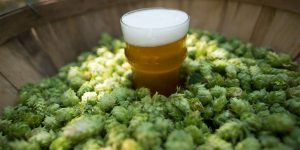
Hops provide beer with both resins and aromatic oils and have three basic uses, depending on the stage of the boiling process where the hops are added. Bittering hops are added early in the boil. Because they are boiled for an hour or more, most of the aromatics of the hops are boiled off, resulting in a beer with bitterness but no hop flavor or aroma. Flavor hops are added 10 to 30 minutes before the end of the boil and contribute hop flavor to the beer along with some bitterness. Aroma hops are added right at the end of the boil (5 to 0 minutes out) and release the aromatics of the hop oils. Dry hops are aroma hops that are added to the cool beer in the fermenter. After 5 to 7 days, dry hops give the beer a pronounced hop aroma which is highly prized in IPAs.
Hop Trends
Ten years ago, bitterness was the hop characteristic that defined IPAs. Everyone was trying to out-do everyone else in terms of IBUs (International Bittering Units) which are simply an indicator of the bitterness of the beer. Names like Palate Wrecker, Hop Stoopid, RuinTen, and Hoptimum boast of their intense bitterness. Over time, many IPA drinkers got tired of the over-the-top bitterness while other beer drinkers wouldn’t touch IPAs because of it.
Six or seven years ago some brewers took a new approach – adding hops later in the boil in order to emphasize hop flavor and decrease bitterness. This attracted more drinkers into the IPA space and brewers began experimenting with many new hop varieties that emphasized flavor.
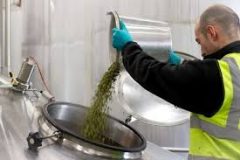
A few years ago, New England style IPAs (or Hazy IPAs) hit the market. In these, hops are added very late in the boil or when the heat is turned off. The result is a powerful aroma (especially with the addition of dry hops) and a fruity, juicy flavor with very low bitterness. These beers tend to be hazy and are thus known as Hazy IPAs. In 2018, The Great American Beer Festival added Hazy IPAs as a category in its beer competition and this category had more entries than any other style.
Hops are the heart and soul of IPAs – the rockstars of the brewing industry. So let’s take a look at the major varieties of IPAs.
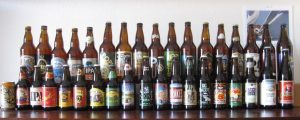
American IPA is the classic IPA standard. It is essentially a pale ale with an ABV (alcohol by volume) in the 5.5% to 7.5% range and 40 to 70 IBUs. It is a very drinkable beer and a fan favorite. Examples include Bell’s Two-Hearted Ale, Firestone Walker Union Jack, Stone IPA, Russian River Blind Pig and Lagunitas IPA.
Session IPA is similar to an American IPA but has considerably lower alcohol – in the 3.5% to 5.5% range. You can have more than one or two and not get hammered. Examples are Samuel Adams Rebel Rider, Firestone Walker Easy Jack, Left Hand Introvert IPA, Great Divide Lasso and New Belgium Slow Ride.
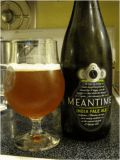
British IPA is the English classic – generally done on the style of IPAs from the 19th century (most modern examples from England are not all that good or authentic). These beers are malty and bitter, featuring English hop varieties, yeasts, and pale and crystal malts. They are typically 5.0% to 7.5% ABV. Good examples are made by Meantime, Samuel Smith’s, Fuller’s Bengal Lancer, Great Lakes Brewing Company and Yards Brewing.
West Coast IPA is a style that emphasizes big fruity hop character, bitterness balanced by a clean, crisp body, full carbonation and tropical fruit notes. They are 5.0% to 7.5% ABV. Try Sierra Nevada, stone, Green Flash, Ballast Point or Pipeworks Brewing’s versions.
East Coast IPA is somewhere between British IPA and West Coast IPA. Piney hops and a solid malt backbone lend a more subdued character than its West Coast cousins. They too are 5.0% to 7.5% ABV. Good examples are Dogfish Head 60-Minute IPA and Victory Hop Devil IPA.
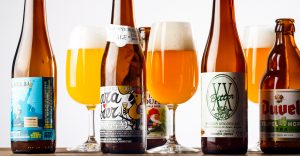
Belgian IPAs have spicy and fruity character from the use of Belgian yeast. Traditional Belgian examples resemble Belgian Tripels with extra hops. Many U.S. examples like Stone’s Cali-Belgique and Green Flash Le Freak tend to be strong IPAs fermented with Belgian yeasts. Others – Like Bruz Beers’ Dawg Daze IPA and Flying Dog’s Raging Bitch – are custom-formulated with Belgian malts and yeasts plus U.S. hop varieties. In the 6.2% to 9.5% ABV range, Belgian IPAs are often stronger than most other IPAs. Other examples include De Ranke XX, Urthel Hop-It, Duvel Triple Hop, and New Belgium Ranger IPA.
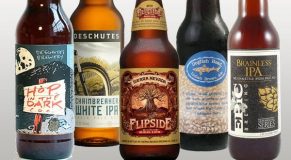
Black IPA is hop-forward and dark with restrained roasted malt character. They are highly drinkable. In the Pacific Northwest, these beers are sometimes referred to as Cascadian IPAs. Their alcohol range is 5.5% to 9.0%. Good examples are 21st Amendment Back in Black, Deschutes Hop in the Dark, Rogue Dad’s Little Helper and Widmer Pitch Black IPA.
Brown IPA is essentially an American Brown Ale with caramel, chocolate, toffee,
and dark fruit malt character. Hops are varieties that complement the sweet malty flavors. 5.5% to 7.5% ABV. Examples include Dogfish Head Indian Brown Ale, Harpoon Brown IPA and Janet’s Brown Ale from Russian River.
Red IPA is a bit more flavorful and malty than most American IPAs with some caramel, toffee and dark fruit notes. They are 5.0% to 7.5% ABV. Examples include Sierra Nevada Flipside IPA, Midnight Sun Sockeye Red and Odell Runoff Red.
Rye IPAs are hoppy and bitter with American hops and Rye malt and a clean, dry finish. They are 5.5% to 8.0% ABV. Some good ones are Bear Republic Hop Rod Rye, Founders Reds Rye, Great Lakes Rye of the Tiger and Sierra Nevada Ruthless Rye.
White IPA is a stronger version of a Belgian Witbier – pale and refreshing with coriander, orange peel and Witbier yeast. They range from 5.5% to 7.0% ABV and they are typically hazy with a dense white head. They are bitter and hoppy like an IPA with the fruitiness and spiciness of a White Beer. Blue Point White IPA, Deschutes Chainbreaker IPA, Harpoon The Long Thaw, New Belgium
Accumulation and Bruz Beers’ Snow Queen are good examples.
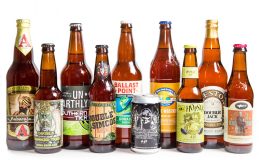
Double (or Imperial) IPAs are stronger versions of IPA that deliver intense hoppiness without the malty sweetness of a Barleywine. They are well-hopped and clean, dry and very drinkable. They are not heavy sipping beers. With IBUs at 60 to 120 and an ABV of 7.5% to 10.0% they are stronger and more hoppy than regular IPAs. Examples include Avery Maharaja, Firestone Walker Double Jack, Russian River Pliny the Elder, Stone Ruination IPA and Three Floyds Dreadnaught.
Hazy (New England) IPAs have exploded over the past few years and were the largest entry category at the Great American Beer Festival. These IPAs are made by adding massive amounts of hops at the end of the boil – producing big, juicy, fruity flavors and aromas and the trademark hazy appearance.
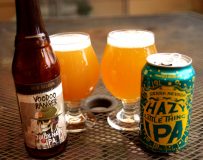
Oat IPAs are brewed with flaked oats, which produce a soft, silky mouthfeel. Try Cerebral and Monkish Brewing Company’s versions.
Milkshake IPAs have gotten popular at many craft breweries, especially among those who find other IPAs to be a little too much. They start as Hazy New England IPAs to which lactose (milk sugar) is added. Some also feature fruits or vanilla and carbonation is low – enhancing the perception of a milkshake. It’s not unusual to find these flavored with chocolate, breakfast cereal or candy. The style originated at Tired Hands Brewing Company and other good examples can be found at Weldworks, 4 Noses, Odell and Station 26.
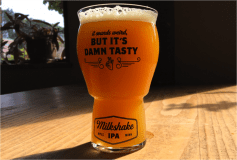
Other emerging styles of IPAs include Fruited IPAs (think grapefruit and other fruits), Sour IPAs (either natural or kettle-soured – sometimes with fruit), Brett IPAs (aged or blended with Brettanomyces), and more recently Brut IPAs (light, hoppy and very dry). And of course we can’t leave out the ultimate gimmick beer – Glitter IPAs.
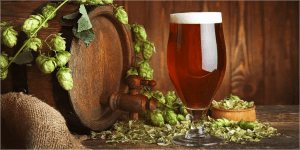
Love ‘em or hate ‘em, IPAs will no doubt be popular for quite some time because A) they are damn good, and B) there is a constant stream of new variations entering the marketplace, keeping the style going strong.
Hoppy New Year!



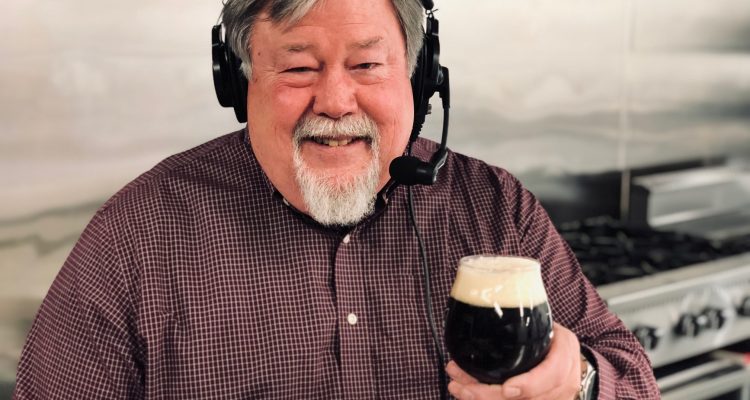
Leave a Reply